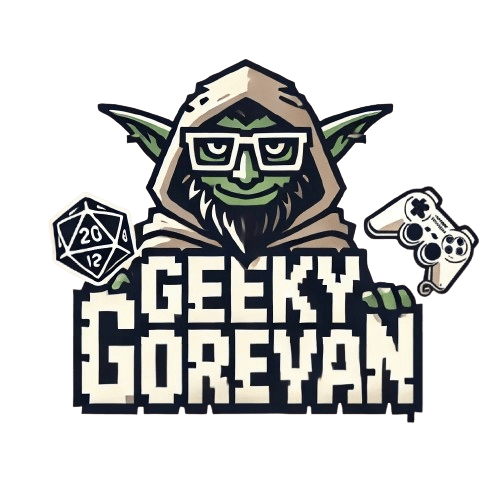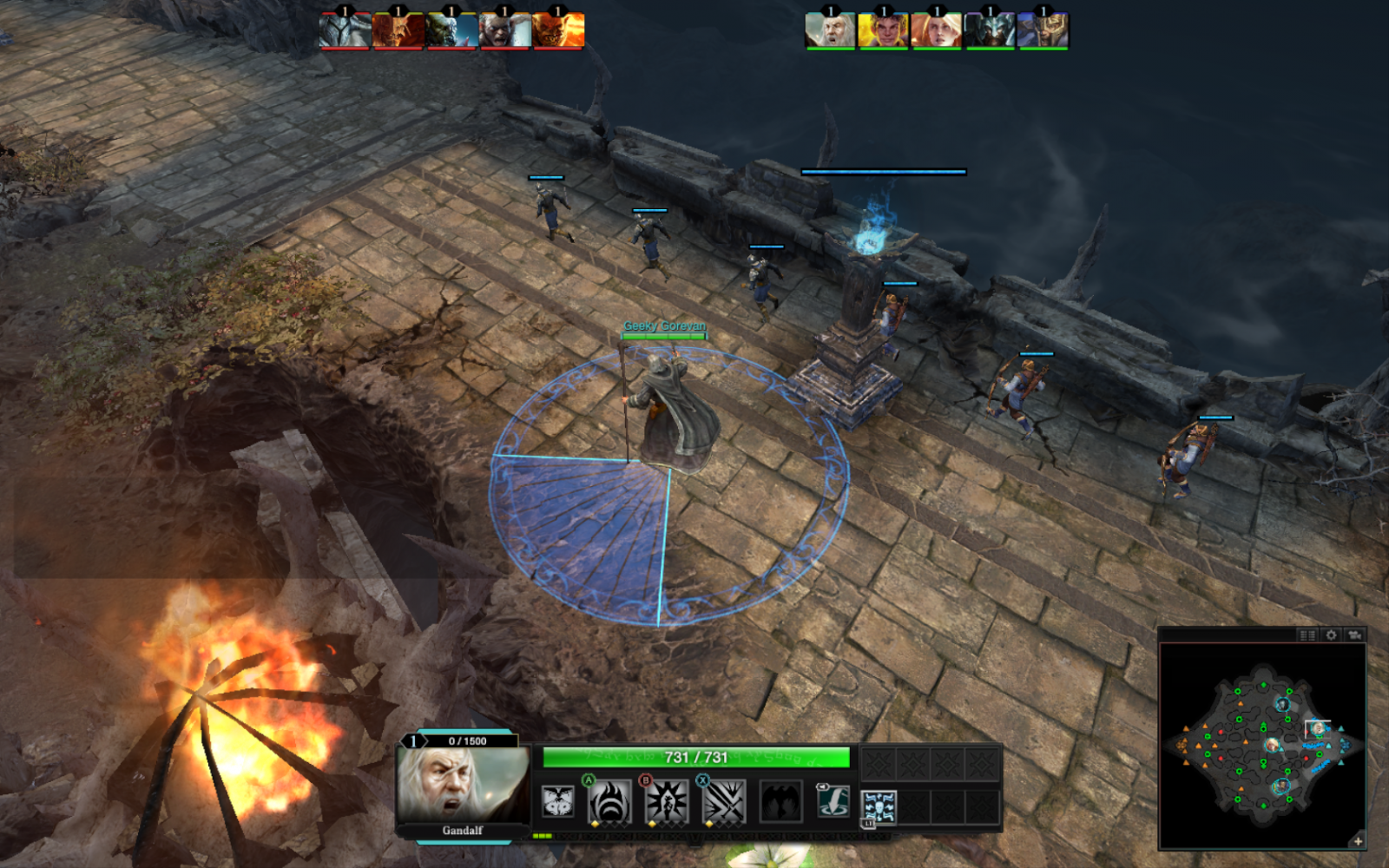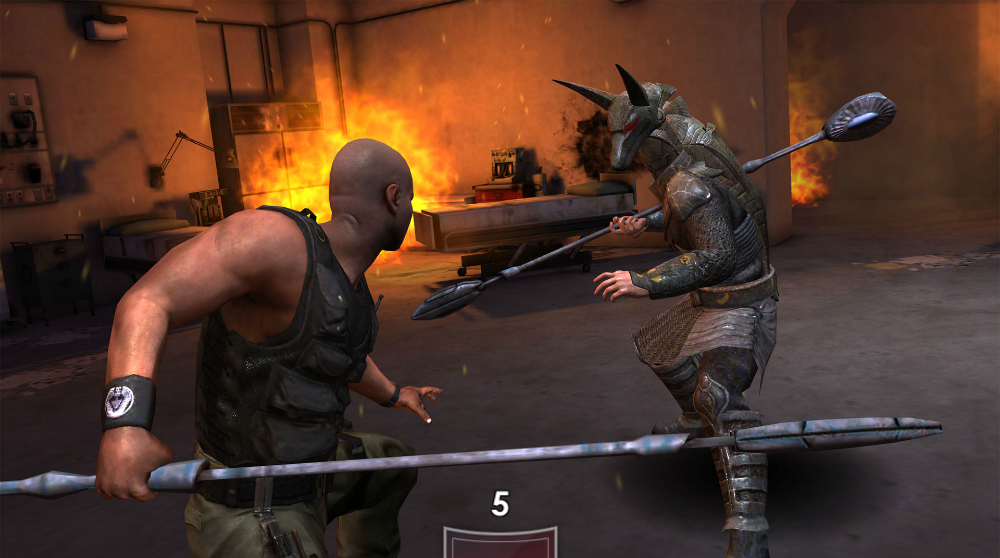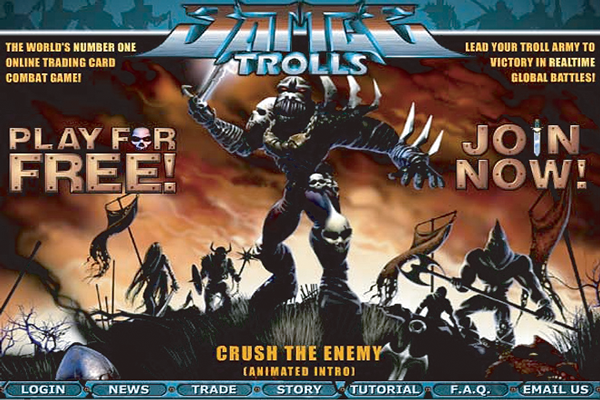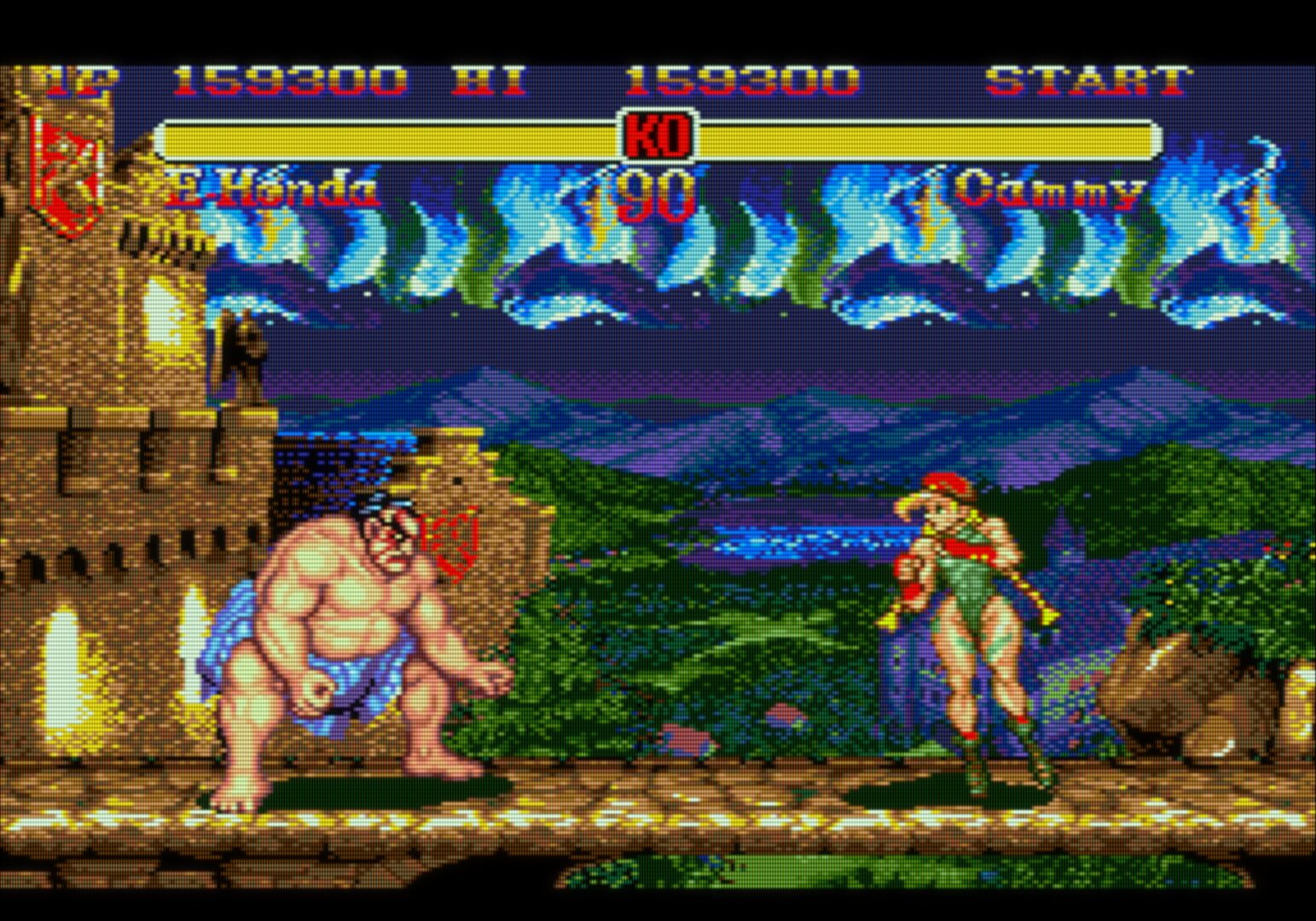When you get a gaming series that has been around for as long as Street Fighter has (and with so many games), it’s hard to pick just one, but I will (and it is a controversial one)!
It’s important to remember that picking a favourite is subjective, especially because nostalgia really influences your decision. When I ask people this question, the answers are usually wildly different, depending on their age!
I still remember playing Super Street Fighter 2 on MS-DOS back in the day while visiting my dad’s friend’s house (Chun Li was awesome!), so although I wasn’t there for the original, I’ve been pretty solid with the Street Fighter games for 30+ years!
Now let’s take a look at my list of Street Fighter games ranked from worst to best. I’ve not listed every SF game as there are LOADS with many versions/releases, but these are the notables. Let me know what your favourite is!
IF YOU WOULD LIKE TO GET CHEAP COPIES OF STREET FIGHTER, HERE IS HOW YOU FIND THEM!
#14 Street Fighter: The Movie (The Game)

Platform: Arcade, PlayStation, Saturn
Release Year: 1995
What happens when you turn a movie based on a video game back into a video game? You get this infamous mess. Using digitized actors from the Van Damme-led movie, this game awkwardly attempted to capture the gritty charm of Mortal Kombat while delivering none of its tightness or atmosphere.
Gameplay: Laggy and floaty, with broken hitboxes and inconsistent inputs. Most characters feel sluggish and unresponsive.
Legacy: Often considered the black sheep of the franchise, but has developed a cult following among bad-game lovers.
Fun Fact: Raul Julia’s M. Bison performance was legendary — but sadly, the digitized version just can’t do it justice.
#13 Street Fighter (SF1)
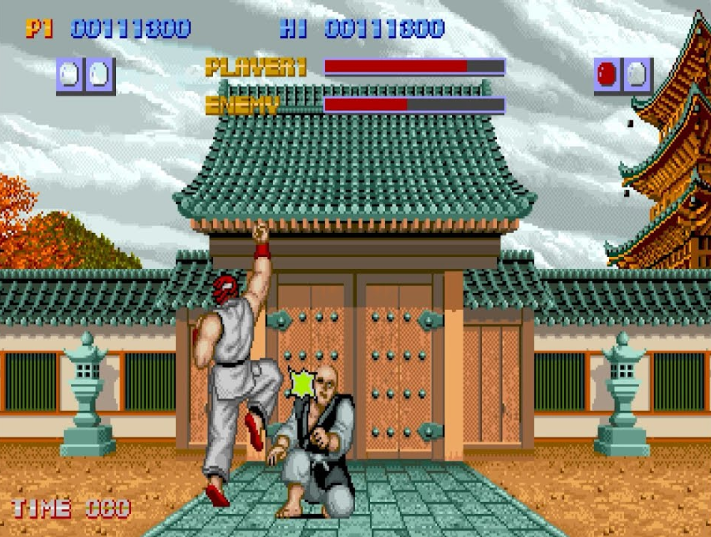
Platform: Arcade, later ports
Release Year: 1987
The one that started it all… and barely held itself together. You only played as Ryu (unless Player 2 joined as Ken), and pulling off a Hadouken required the stars aligning and sacrificing a goat.
Gameplay: Extremely stiff, with unreliable controls and poor collision detection. Moves are hard to execute, even by arcade standards.
Legacy: Historically important as the origin of the franchise, but not one you’ll revisit for fun. Most players discovered it after SFII and were immediately grateful for the sequel.
Trivia: The arcade cabinet had pressure-sensitive buttons on some versions — you had to physically hit them harder for stronger attacks.
#12 Street Fighter Alpha (Zero in Japan)
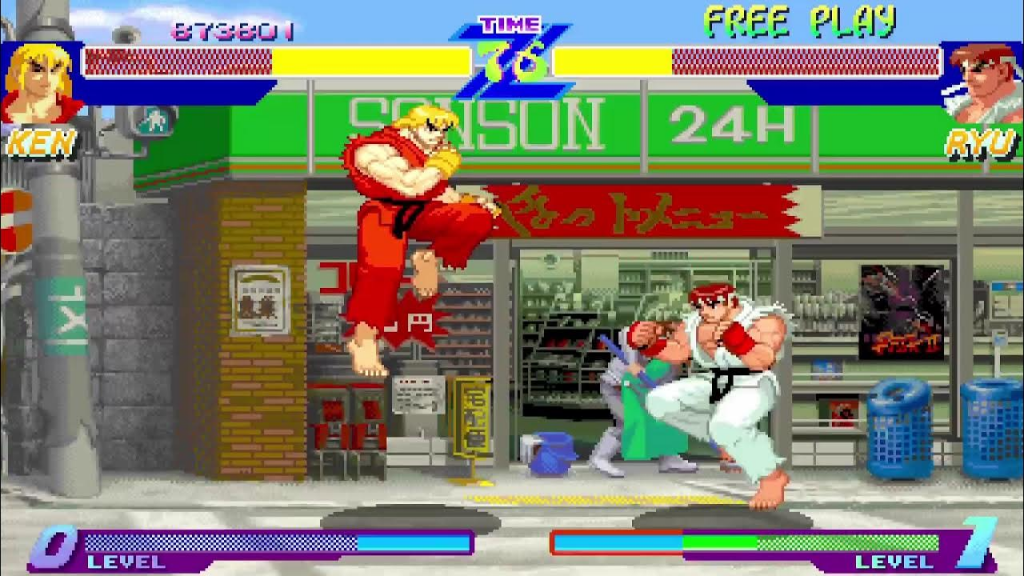
Platform: Arcade, PlayStation, Saturn
Release Year: 1995
This entry bridged the gap between SF1 and SF2, introducing younger versions of characters and anime-style graphics. While it introduced interesting mechanics like Chain Combos, it felt more like a stepping stone than a full leap.
Gameplay: Experimentally fast-paced but somewhat clunky compared to its sequels. Alpha Counters debuted here, giving players a new defensive option.
Legacy: Paved the way for Alpha 2 and 3, which refined nearly everything.
Visuals: Beautiful sprite work for the time, with bright, clean animations.
#11 Street Fighter II (Various Console Ports)

Platform: SNES, Genesis, Master System
Release Year: 1991–1994 (various)
These ports brought Street Fighter II home — and that was huge. But not all ports were created equal. Frame drops, missing animations, and watered-down audio were common.
Gameplay: Generally intact but lacks the fluidity of the arcade. Some moves feel off, and balancing varies widely by system.
Legacy: Despite limitations, these versions made Street Fighter a household name.
Notable Port: The SNES version of Street Fighter II Turbo was highly praised and sold over 4 million copies.
#10 Street Fighter EX+ Alpha

Platform: Arcade, PlayStation
Release Year: 1997
The first 3D polygonal entry in the Street Fighter franchise, and it’s just as weird and fascinating as it sounds. Developed in partnership with Arika, EX+ Alpha brought a new visual style and brand-new characters that divided fans but created a niche following.
Gameplay: Retained the classic six-button control scheme and combo system, but added Super Canceling and Guard Breaks. The 3D models felt blocky but responsive. Characters like Skullomania and Doctrine Dark were unique to this universe and have cult status today.
Legacy: Considered non-canon, but EX+ Alpha pushed the franchise out of its 2D comfort zone. It’s the kind of experimental spin-off that earns more respect in hindsight than it ever did at launch.
Fun Fact: Some EX characters later reappeared in Arika’s spiritual successor, Fighting EX Layer, years later, proving they still had fans long after their polygonal debut.
#9 Street Fighter 6

Platform: PC, PS5, Xbox Series X|S
Release Year: 2023
SF6 launched with a level of polish and personality that instantly clicked with fans. It modernized the series, but for me, it just didn’t click. I was luckily invited to the beta, but it was really disappointing for me as an old school fan.
Gameplay: The new Drive System is the heartbeat of every match, replacing the old V-Gauge. Drive Impact, Parry, and Overdrive moves offer strategic risk-reward decisions. World Tour mode adds RPG elements and character creation.
Legacy: Still early, but already praised as one of the most complete fighting games at launch. Time will tell if it holds its place in the top tier, but the foundation is rock solid.
Fun Fact: The game features real-time commentary options from famous fighting game personalities, bringing the esports feel straight into casual matches.
#8 Street Fighter Alpha 2

Platform: Arcade, PlayStation, Saturn, SNES
Release Year: 1996
A refined and polished sequel that elevated the Alpha series to new heights. Alpha 2 kept the flashy style of its predecessor but delivered a smoother and more responsive gameplay experience that’s still praised by fans today.
Gameplay: Introduced Custom Combos (“Variable Combos”) that let players unleash freeform super attack strings, a precursor to what would become a staple in later games. The Alpha Counter system was retained and fine-tuned for better flow.
Legacy: Seen by many as the true start of the Alpha series’ golden age. While Alpha 3 eventually stole the spotlight, Alpha 2 built the foundation. Its pace, animations, and balance gave it strong replay value.
Visuals: Gorgeous sprite animations with rich color palettes and expressive character designs that helped define 90s Capcom aesthetics.
Fun Fact: The SNES port of Alpha 2 was notoriously ambitious, pushing the 16-bit hardware to its limit with long load times and compressed sound, but still delivering a faithful version of the game.
#7 Street Fighter II: The World Warrior

Platform: Arcade
Release Year: 1991
The game that exploded across arcades like a sonic boom. While this wasn’t the first fighting game, it was the one that set the standard. With eight iconic characters and a revolutionary combo system that was actually discovered by accident, The World Warrior defined an entire genre.
Gameplay: Introduced the six-button control layout and differentiated characters with distinct movesets and fighting styles. Compared to later entries, it was slower and far less balanced, but the DNA of every fighting game since can be traced back here.
Legacy: Every arcade had it. Every kid knew Ryu’s Hadouken. SFII didn’t just make Street Fighter a hit. It transformed gaming culture.
Fun Fact: The accidental discovery of combos (hitting opponents before they could recover) was a glitch that Capcom turned into a design feature in future titles.
#6 Street Fighter V: Champion Edition
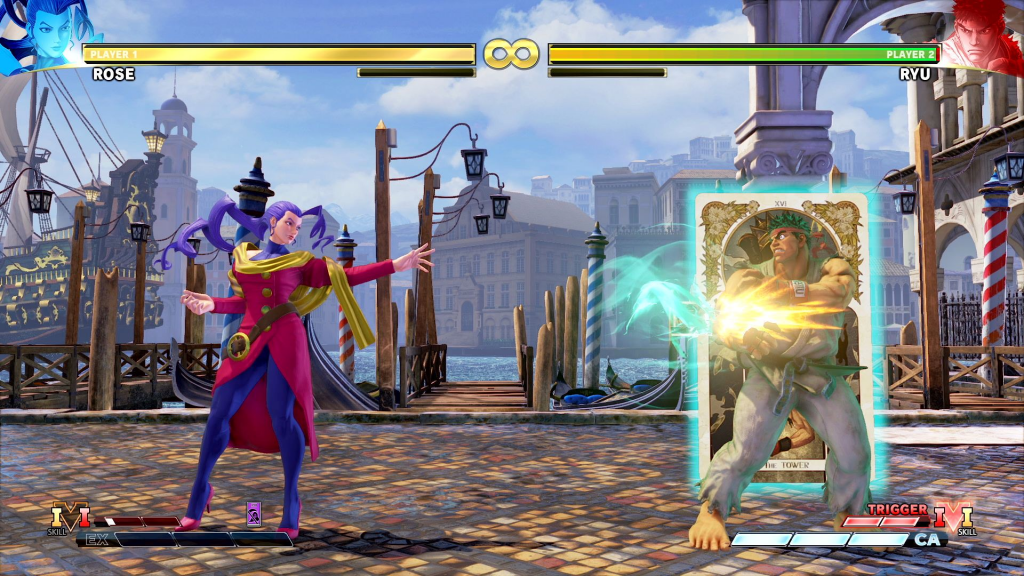
Platform: PC, PS4
Release Year: 2020
The redemption arc. After years of updates, bug fixes, balance patches, and roster expansions, Champion Edition is what SFV should’ve been at launch. It packs a massive amount of content, modes, and polish into a complete competitive fighter.
Gameplay: Still built around V-Triggers and V-Skills, but with much-improved balance and far better roster variety. Over 40 characters, multiple V-Triggers per fighter, and refined netcode made this version a genuine joy to play online.
Legacy: While the launch left scars, Champion Edition helped recover much of SFV’s reputation. Tournaments returned, fans reengaged, and Capcom showed it could still support a game long term.
Fun Fact: This version included characters from Final Fight, Street Fighter III, and more, making it one of the most crossover-packed rosters in the series.
#5 Street Fighter Alpha 3
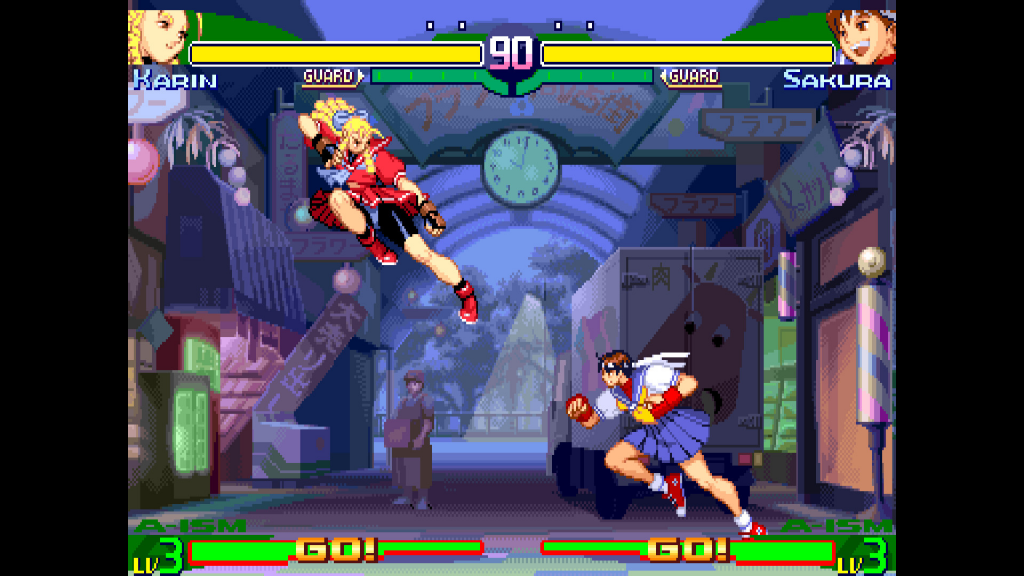
Platform: Arcade, PlayStation, Dreamcast, PSP
Release Year: 1998
A fan favorite with style and substance. Alpha 3 took everything from its predecessors and added a deeper combo system, multiple “ISM” fighting styles, and an absolutely stacked roster.
Gameplay: Players could choose between A-ISM (standard Super meter), X-ISM (more damage, fewer options), and V-ISM (custom combo potential). The variety lets fans tailor their playstyle and experiment like never before.
Legacy: The most beloved Alpha game, often ranked among the best 2D fighters of its time. PSP and Dreamcast versions expanded the roster even further, including characters like Ingrid and Yun.
Fun Fact: The announcer’s over-the-top voice lines (“A NEW CHALLENGER!”) became iconic and are still quoted by fans today.
#4 Street Fighter IV

Platform: Arcade, PlayStation 3, Xbox 360, PC
Release Year: 2008 (original), 2014 (Ultra)
The game that brought Street Fighter roaring back to relevance. After nearly a decade in the shadows, Capcom struck gold with SFIV, blending the classic 2D gameplay with 3D models in a way that felt fresh yet familiar.
I remember my days in Gamerbase (a gaming centre that I worked in) playing this game every day with my mate, but I was a bit of a troll one day and simply Akuma air haduken’d him to death, and he took the huff (sorry Willie!)
Gameplay: Introduced the Focus Attack and Focus Attack Dash Cancel (FADC) mechanics, allowing players to absorb and cancel attacks for advanced strategies. Combos felt snappy, and the input leniency helped welcome newer players without compromising depth.
Legacy: SFIV revitalized the fighting game scene and laid the groundwork for the modern FGC (Fighting Game Community). It brought players back to arcades, launched Twitch-era competitive play, and defined an entire generation of digital brawlers.
Fun Fact: The game’s exaggerated ink-brush art style was inspired by Japanese sumi-e painting, giving it a dynamic and bold visual identity unlike anything else at the time.
#3 Marvel Super Heroes vs. Street Fighter (1997)
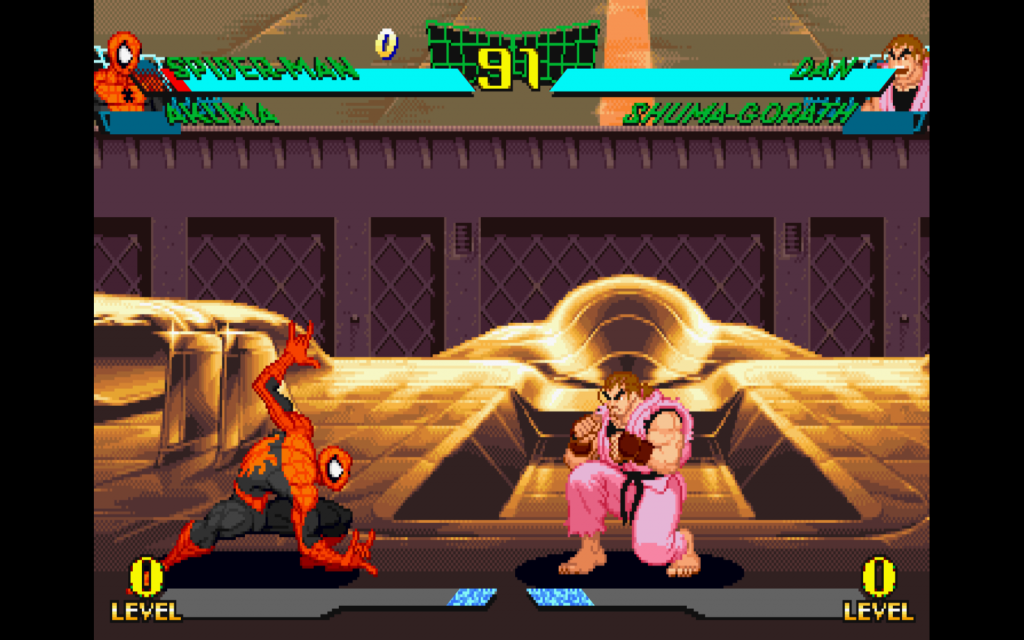
Platform: Sega Saturn, PS1
Release Year: 1997
This crossover caused a lot of blisters in my house growing up. We were big on our fighting games, and what kids don’t love Marvel? Mixing them both together was genius!
Gameplay: This entry introduced tag-team battles to the Street Fighter crossover formula, letting players switch between characters mid-fight for combos and assists. It refined the chaotic formula of X-Men vs. Street Fighter, adding more balanced gameplay and smoother mechanics. Each character had flashy Hyper Combos and unique synergy with their partner, emphasizing momentum and team strategy.
Legacy: Though overshadowed by its sequel (Marvel vs. Capcom), this game struck a sweet spot between traditional Street Fighter fundamentals and over-the-top Marvel action. The Saturn version is highly regarded by purists, while the PlayStation port is seen as a watered-down curiosity. For fans, it remains a key stepping stone in Capcom’s legendary versus series.
Fun Fact: The Japanese Sega Saturn version is so arcade-accurate that it’s considered the definitive home version—but it was never released outside Japan. Hardcore fans imported it and the 4MB RAM cartridge just to get the full tag-team experience, making it a cult favorite among collectors and tournament enthusiasts.
#2 Street Fighter III: 3rd Strike (1999)
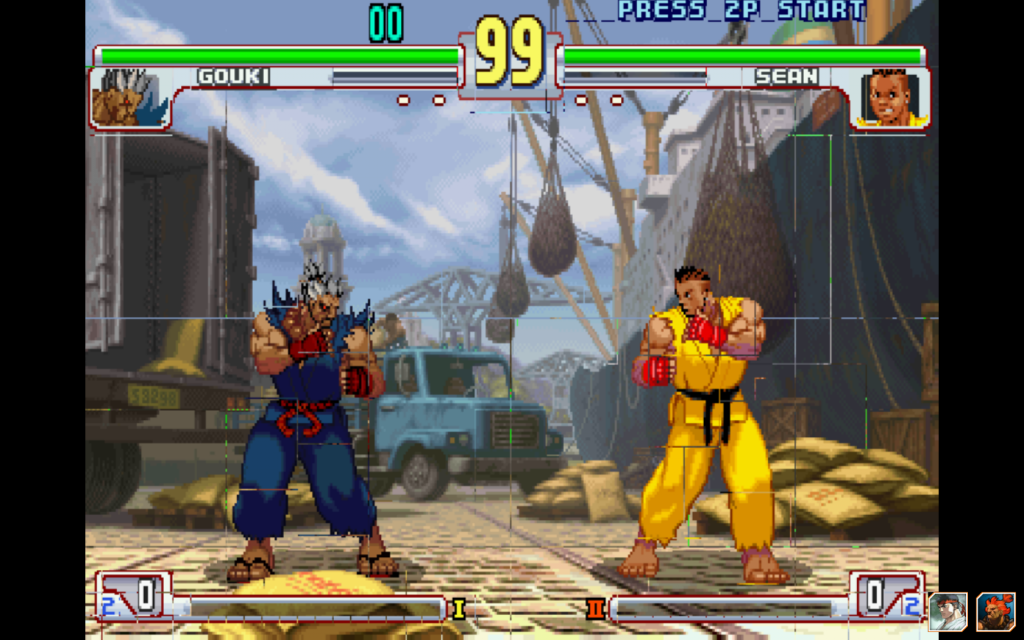
Platform: Arcade, Dreamcast, PS2, Xbox, PS3, Xbox 360, PC
Release Year: 1999
I was late to the party with this one and didn’t really get a chance to play it until the PS3 release! I was working in a gaming centre at the time when I caught wind of some of the regular fighting game folks playing something really awesome. As soon as I set eyes on it, I was obsessed!
Gameplay: 3rd Strike built on its predecessors with parrying at the core of its system, letting skilled players deflect attacks with perfect timing. It added new characters like Makoto, Q, and Twelve, alongside returning favorites like Chun-Li. The game emphasized precision, spacing, and mind games over raw aggression, with each fighter having unique Super Arts to choose from before the match.
Legacy: Though it was overlooked at launch, 3rd Strike grew into a cult classic and is now considered one of the most technically demanding and rewarding fighters of all time. EVO Moment #37—Daigo’s legendary parry comeback cemented its place in FGC history and turned it into a competitive legend.
Bonus Fact: The game’s soundtrack was a bold departure from tradition, featuring hip-hop, jazz, and drum & bass influences. It even had character-specific themes with lyrics, a rarity at the time. The result? A vibe that made 3rd Strike stand out as the coolest Street Fighter ever made.
#1 🔥 Street Fighter EX3 – Hot Take Hall of Fame
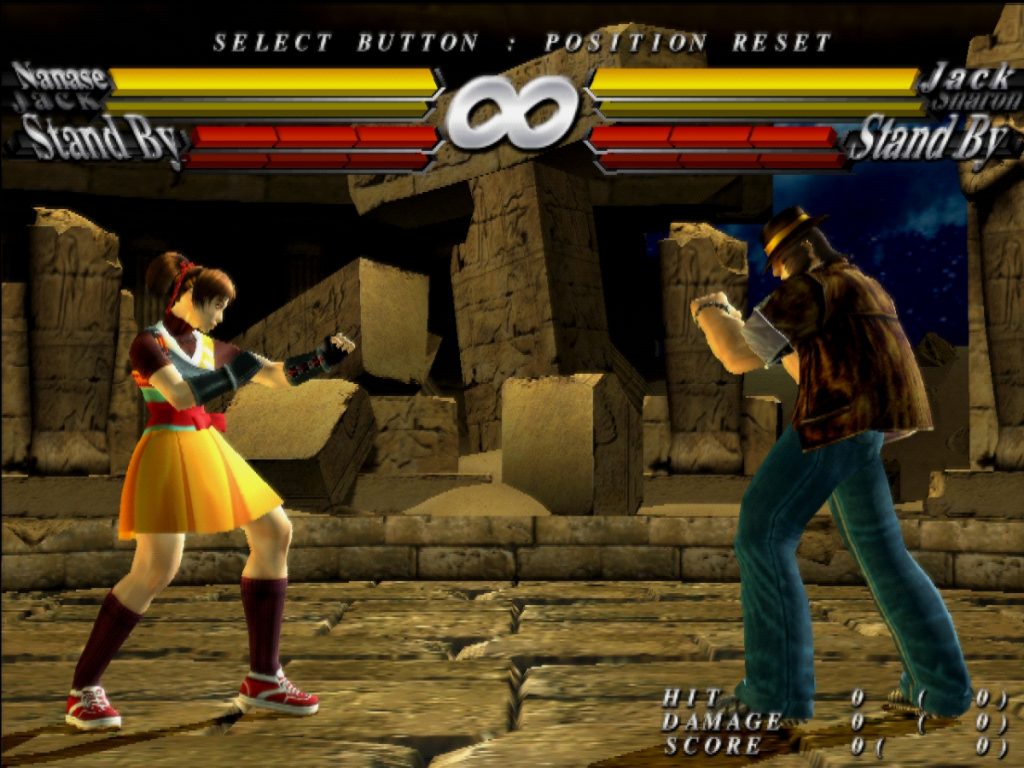
Platform: PlayStation 2
Release Year: 2000
Yes. We went there. You may not agree, but this is my Hot Take Hall of Fame pick, and I’m proudly standing by it. While EX3 often gets slammed for its 3D graphics and divergence from tradition, it’s one of the most mechanically fun, content-rich, and downright interesting entries in the entire series!
I got this game as part of a PS2 bundle when my parents took me and my brother to Game to excitedly upgrade to the next generation of gaming (along with Crazy Taxi).
My brothers and I played EX3 to death, and I recently got back into playing it and it has not lost any of its appeal, whatsoever. The controls are still easy to use, the gameplay is flawless and the concept of the game being a tag-team just really jumps out at me!
Gameplay: EX3 introduced tag-team mechanics to the Street Fighter franchise, allowing players to switch characters mid-combo and build custom teams. The “Original Mode” lets you recruit fighters as you advance, adding a unique and fun element. Super Cancels, Surprise Blows, and Critical Parade mechanics added flair and depth to every match.
Legacy: Dismissed by many at launch, EX3 has aged into a cult classic. Its roster is filled with oddballs like Skullomania and Pullum Purna, characters who are beloved in the Arika fandom. While it may never be canon, it dared to do something different, and that makes it legendary in my eyes.
Fun Fact: EX3 was a PS2 launch title in Japan, and one of the first fighting games to use tag systems.
And there you have it! Agree? Disagree? Preparing your counter-tier list as we speak? Hit us up and let us know which game you would put in the Hot Take Hall of Fame.
